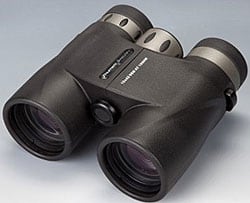Dennis
A couple of months ago I spent some weeks on the Isle of Islay and I had a terrifc 8x42 with me but for a variety of reasons I ended up using an 8x32 for most of the time and not once did I feel that the 32s were inadequate.
But then I used the 42s and immediately felt more 'at ease', more 'comfortable', with the view. And I can't really explain just why this was the case. I could speculate that the bigger exit pupil allowed me to be a bit more 'approximate' when putting the bins up to my spectacles, but I never actually had any problems with the 32's exit pupil.
For me therefore the 32s are terrific lightweight and small bins that I carry when I am using a lot of photographic gear. 42s remain my main bins despite the fact that I cannot actually explain why I feel more comfortable with them.
Perhaps compared with 32s I get with 42s a little of what Henry gets when comparing his 8x56s with 42s.
Go figure.
Lee
A couple of months ago I spent some weeks on the Isle of Islay and I had a terrifc 8x42 with me but for a variety of reasons I ended up using an 8x32 for most of the time and not once did I feel that the 32s were inadequate.
But then I used the 42s and immediately felt more 'at ease', more 'comfortable', with the view. And I can't really explain just why this was the case. I could speculate that the bigger exit pupil allowed me to be a bit more 'approximate' when putting the bins up to my spectacles, but I never actually had any problems with the 32's exit pupil.
For me therefore the 32s are terrific lightweight and small bins that I carry when I am using a lot of photographic gear. 42s remain my main bins despite the fact that I cannot actually explain why I feel more comfortable with them.
Perhaps compared with 32s I get with 42s a little of what Henry gets when comparing his 8x56s with 42s.
Go figure.
Lee






